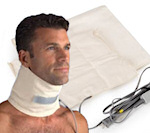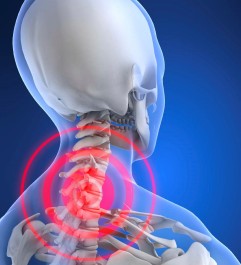Neck And Back Arthritis
Arthritis happens whenever cartilage within the joints becomes worn out due to deterioration, ageing, injuries or neglect. Osteoarthritis, the most prevalent kind of neck and back arthritis, can also include diminished cartilage material, over growing of bone tissue as well as bone spur formation. This leads to the bones rubbing against each other, triggering pain, inflammation and diminished motion involving the joint or joints. Osteoarthritis is commonly found in the neck and back, but may appear within other joints like the hip, knee or hand.
Symptoms Of Arthritis
In general, symptoms and signs of neck and back arthritis involve stiffness, joint pain and inflammation. This may entail:
- Neck and back pain which comes and then goes
- Morning stiffness after getting out of bed or following certain activities
- Pain may decreases when resting or may improve with activity
- Tenderness, pain or even numbness in the neck and back which may radiate into the shoulder, arm, hip or leg
- A popping or crunching sound or feeling of bones rubbing together
- Weakness in the arms or legs
- Restricted motion with difficulty in bending, walking or turning the head

For now, arthritis can’t be cured, however, the discomfort and pain can be alleviated with medicine, rest when needed and therapies that you can use at home like heat therapy, cold therapy, exercises and traction. While it is sometimes disabling, most individuals with degenerative spinal arthritis lead productive and active lifestyles. Learning about arthritis and finding simple measures for arthritis symptoms are important dealing effectively with arthritis.
10 Tips For Neck And Back Arthritis
1. Professional Help
See your health care provider on a regular basis. Whether you are interested in prevention or have been diagnosed as having arthritis, make sure to keep your doctor informed regarding discomfort or pain.
2. Reasonable Activity.
This may include walking, yoga or tai chi; regular use of reasonable activity can help decrease risks of falls, help manage stress, depression and anxiety, work towards healthier bodyweight, maintain joint cartilage, and improve joint flexibility and strength. Reasonable activity helps to burn excess calories, increase muscle and bone strength, without jarring motions which sprain or cause irritated neck and back joints.
3. Control Your Weight
Weight places stress on your joints, and the more you weigh, the more stress your joints will have to endure. Find your ideal weight and work towards it. Just losing 10 or 15 pounds will be enough to make a difference and can reduce joint pain. Losing weight may help you feel better about yourself and can lead to a healthier lifestyle. Setting easy goals, like losing 5 pounds initially is a good way to start.
4. Sitting Correctly
Long periods of sitting and sitting in poor posture can be harmful. Over a period of years, this can lead to both neck and back arthritis. The concept of ergonomics helps to minimize strain from maintaining awkward postures, and there are some great products that can help.
Here are some tips for healthy sitting:
- Keep the feet firmly on the floor, use a footrest if needed
- Don’t cross the legs; keep your knees and thighs bent and level
- Use a good support for the lower back
- A chair that adjusts to fit you right is a good idea. Having armrests that can adjust to let the shoulders relax will help reduce neck tension
- Reduce stiff muscles by doing stretches right in your chair like the neck stretching exercises, neck lengthening stretches or the sitting stretch for back pain relief
- Take small breaks frequently to get up and move around or stretch the back, especially when you experience pain
- Use an affordable seat cushioning system if your chair is not sufficient
5. Stand Correctly
Some individuals do work that requires long periods of standing. This places pressure on the back and neck joints
Here are some tips for avoiding pain when standing:
- Make sure you are on a stable surface, having the feet flat on the ground
- Don’t twist your back when reaching for objects, make sure you square your entire body and move close to the object to change postures
- When bending, your knees should bend, not your back.
- Be aware of safe lifting techniques for the neck and back
- If in one location, use a footrest to take pressure off one side and switch often
6. Protect Your Joints
Avoid stressing your joints too much. Using a strong back braces when lifting or for support during flare-ups can help reduce inflammation. There are neck supports that can help relieve muscle tension. Protect your joints by using supportive, comfortable footwear and don’t overdo it. Pace yourself by understanding your limitations. If needed, use devices for assistance like walkers, canes or braces. Use a dolly or a cart with wheels for heavy objects. If you brace your back, your shoulder may be at greater risk when lifting something heavy. Use stepping stools and devices that prevent you from over-reaching to protect your joints and prevent strained muscles.
7. Quality Nutrition
Joints like quality nutrition; lower your intake of harmful fats, eat fresh fruit and vegetables rich in vitamin C, D and Calcium which can help reduce your risk of developing neck and back arthritis. Supplementing your diet with fish oil, nuts and joint nutrients can be helpful.
8. Don’t Smoke
Smoking deteriorates overall health and is annoying to others. Many will say that smoking will increase neck and back pain due to reduced blood supply, but many of the deeper structures have little or no blood supply. The chronic coughing, often called a smokers cough, greatly increases pressure on spinal discs in the neck and back which are sensitive to this pressure. Over time, this can cause weakening and lead to painful disc damage and degenerative arthritis.
9. Seek Solutions
There are many options for treating neck and back arthritis. If what you are doing is not working, do some research or talk to your doctor about other treatment options which may provide better solutions. Relief of pain is possible.
10. Know Yourself
Become more aware about your arthritis and how it effects your body. Take action whenever you notice changes in your arthritis symptoms. Do things which allow you to relax and feel good; a therapeutic massage, gardening, reading, a movie or going out with friends. Reduce anxiety and stress by trying to eliminate or confront things causing you emotional discomfort and pain.
For some, arthritis is a nuisance, for others, arthritis is a disease that manifests itself inwardly as well as outwardly; pain and anger, limited ability and dependency on others, fear and loneliness, depression, sadness and frustration. Nurture yourself inside and out. Seek those with healing in their hearts.

